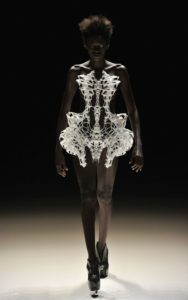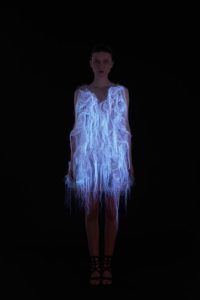Fashion and Technology: The Intersection of Innovation and Style
Fashion and technology may seem like disparate fields, but in today’s rapidly evolving world, they are increasingly intertwined. From wearable tech to 3D printing, technology is revolutionizing every aspect of the fashion industry, from design and production to marketing and retail. This essay explores the dynamic relationship between fashion and technology, highlighting key innovations and their impact on style, sustainability, and consumer experience.
- Wearable Technology: Wearable technology, such as smartwatches, fitness trackers, and augmented reality glasses, has become increasingly popular in recent years. These devices not only serve functional purposes but also act as fashion accessories, blurring the lines between fashion and technology. For example, luxury fashion brands have collaborated with tech companies to create stylish wearable tech pieces that seamlessly integrate into everyday attire. This convergence of fashion and technology not only enhances convenience but also opens up new avenues for self-expression and personalization.
- 3D Printing in Fashion: 3D printing has emerged as a game-changer in the fashion industry, offering designers unprecedented freedom in creating intricate designs and personalized garments. This technology allows for the rapid prototyping of clothing and accessories, reducing waste and production costs while enabling greater customization. Moreover, 3D printing enables the production of complex structures and materials that would be impossible to achieve using traditional manufacturing methods. As a result, designers are pushing the boundaries of creativity and innovation, creating avant-garde pieces that challenge conventional notions of fashion.
- Virtual Reality (VR) and Augmented Reality (AR): Virtual and augmented reality technologies are transforming the way consumers experience fashion, both online and offline. VR allows shoppers to virtually try on clothing and accessories, providing a more immersive and interactive shopping experience. AR, on the other hand, overlays digital information onto the physical world, enabling users to visualize how garments would look in real-life settings. These technologies not only enhance the convenience of online shopping but also bridge the gap between the digital and physical realms, blurring the lines between virtual and reality.
- Sustainable Fashion Innovations: Technology is also driving innovation in sustainable fashion, addressing the industry’s environmental and ethical challenges. From biofabrication and lab-grown materials to textile recycling and supply chain transparency, technological advancements are enabling brands to adopt more sustainable practices. For example, companies are exploring alternative materials derived from renewable sources, such as algae and mushrooms, to replace traditional textiles like cotton and polyester. Likewise, blockchain technology is being used to track and verify the origins of garments, ensuring fair labor practices and reducing the risk of counterfeit goods.
In conclusion, the intersection of fashion and technology is reshaping the way we think about style, innovation, and sustainability. From wearable tech and 3D printing to virtual reality and sustainable fashion, technology is driving unprecedented change in the fashion industry, offering new possibilities for creativity, customization, and consumer experience. As technology continues to evolve, so too willways in which we engage with and define fashion in the digital age.


You May Also Like
Discover Talent and Creativity at the BModel Annual Fashion & Photography Contest in Alicante
Alicante, Spain – This September, the scenic city of Alicante will play host to a dazzling showcase of fashion and photography as BModel presents its Annual Fashion & Photography Contest. Scheduled from September 27 to 30, 2024, this prestigious event will bring together talented models and photographers from around the globe for a weekend of...
Paula Eleta Barišić Interview
Can you tell us a little about yourself? Can you share a unique or interesting aspect about yourself that people may not know? I graduated the Faculty of Teacher Education and I love working with children. I am communicative, I love meeting new people and cultures. Apart from modeling, what other passions or hobbies...